The document discusses congestion control and resource allocation in advanced computer networks, emphasizing the distinction between flow control and congestion control. It outlines various methods for managing data transmission, including taxonomies of router-centric, host-centric, reservation-based, and feedback-based approaches. Additionally, it evaluates algorithms for packet queuing and introduces concepts like fairness in resource allocation among users.




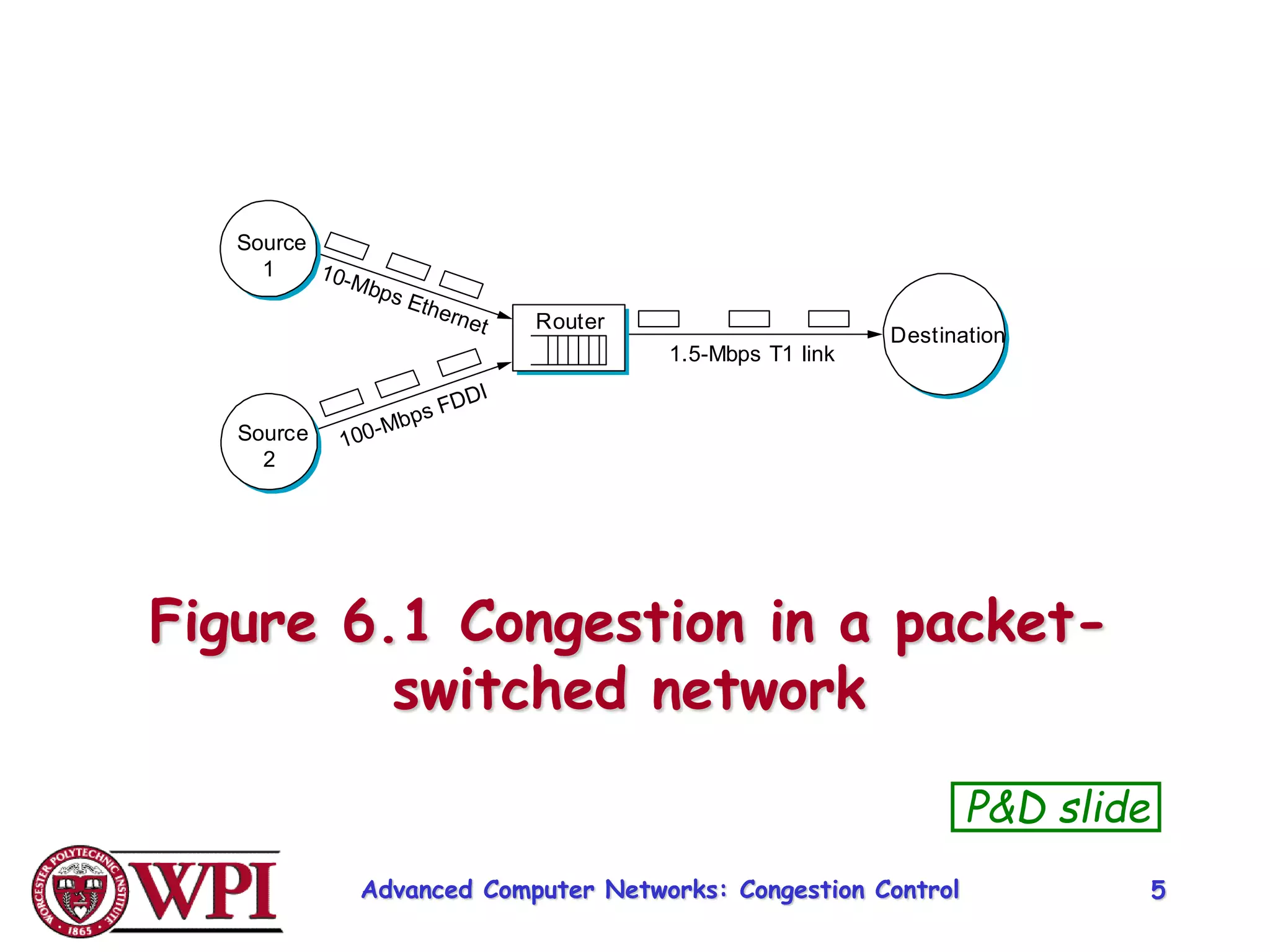
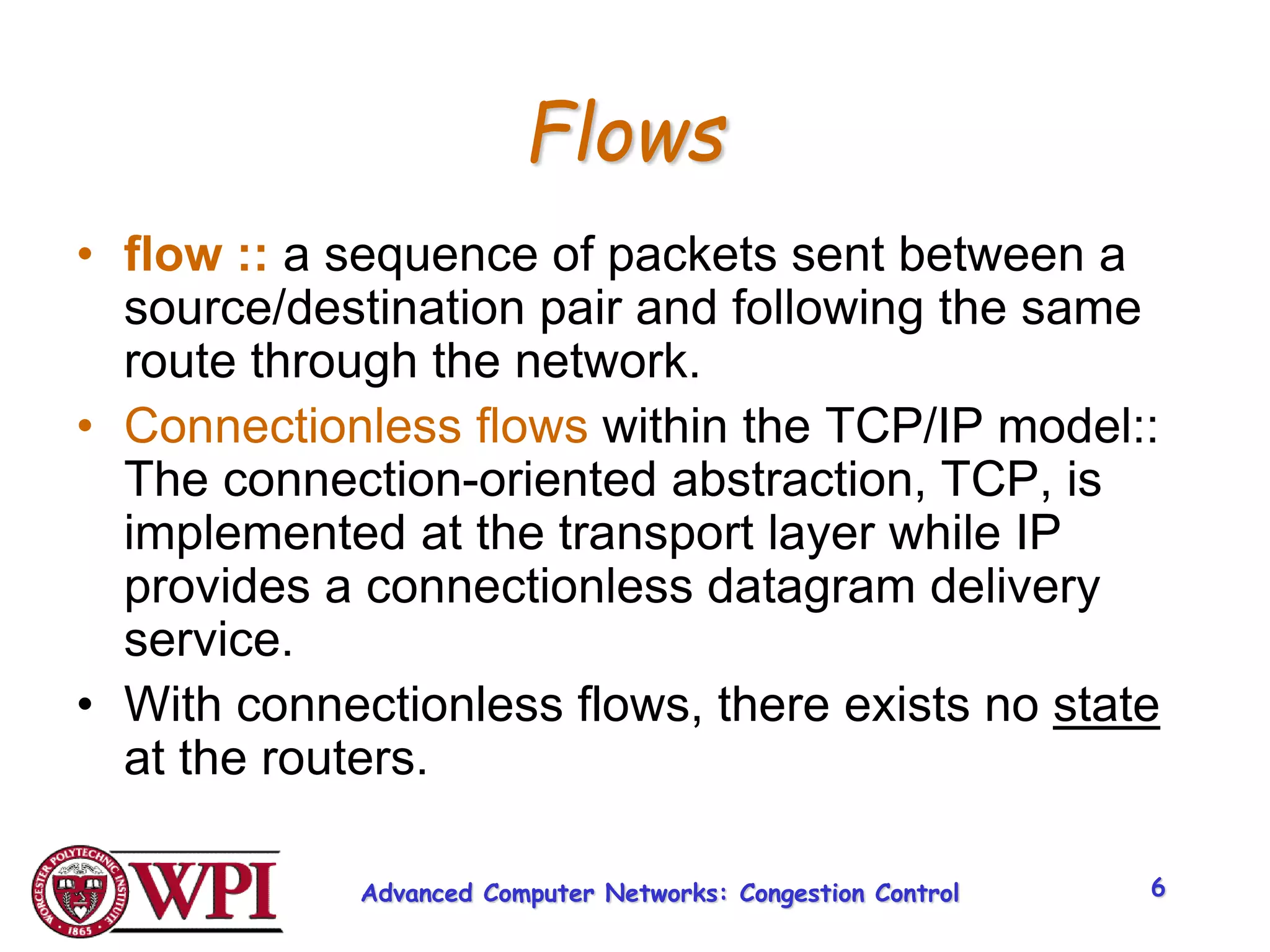




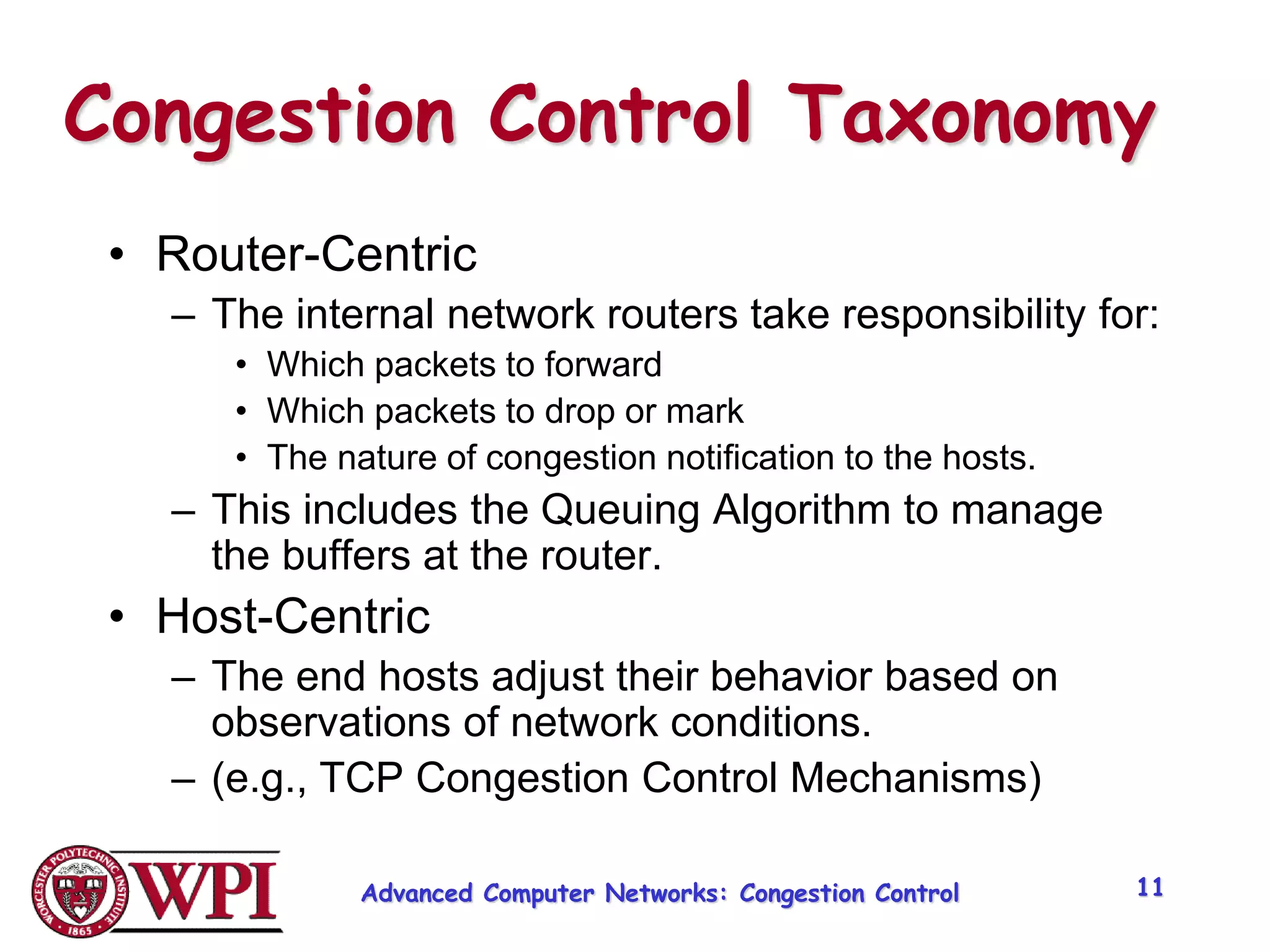




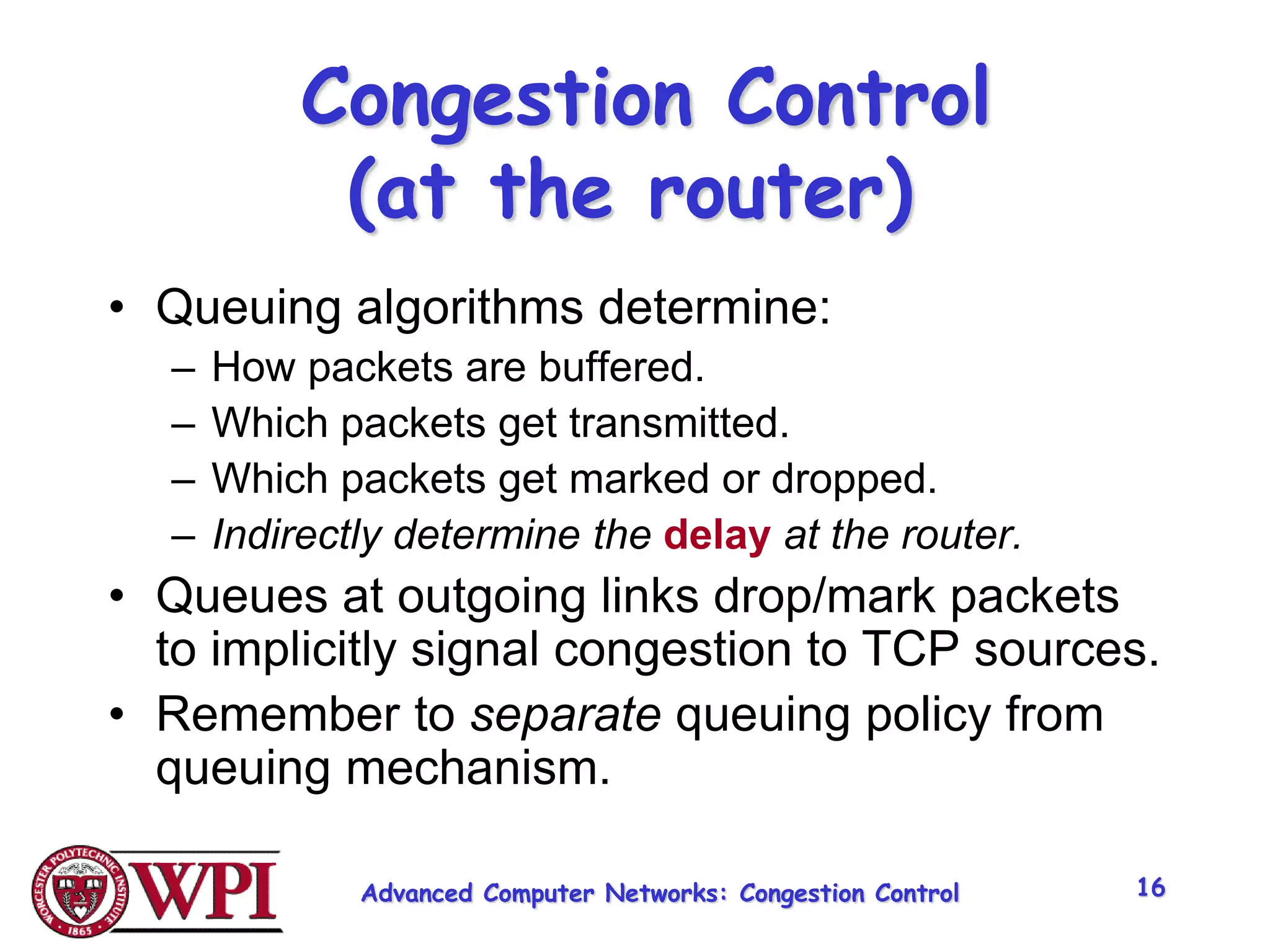
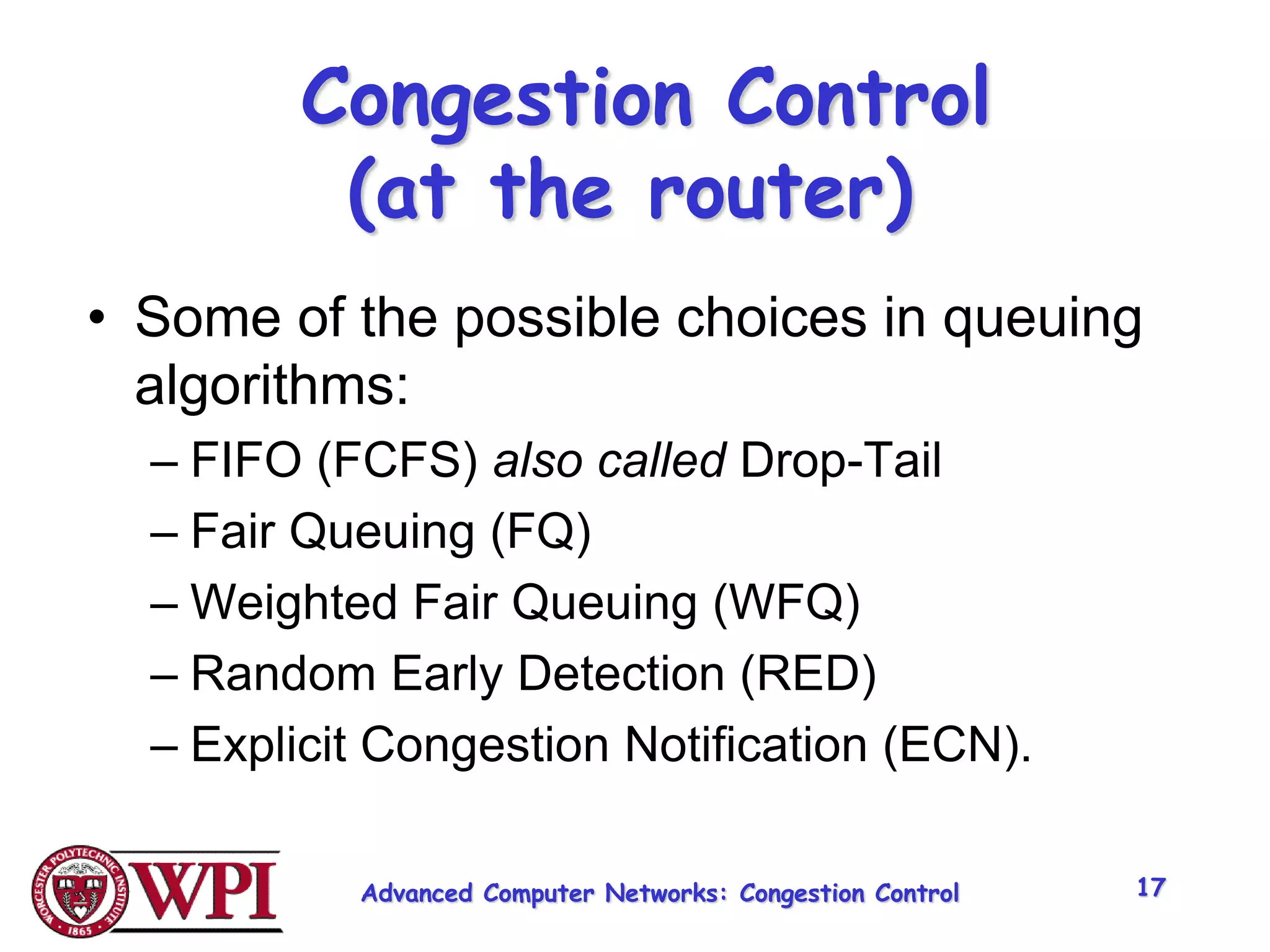
![Advanced Computer Networks: Congestion Control 18
Drop Tail Router [FIFO]
• First packet to arrive is first to be transmitted.
• FIFO queuing mechanism that drops packets from
the tail of the queue when the queue overflows.
• Introduces global synchronization when packets are
dropped from several connections.
• FIFO is the scheduling mechanism, Drop Tail is the
policy](https://image.slidesharecdn.com/congestioncontrol-210408175310/75/Congestion-control-18-2048.jpg)

![Advanced Computer Networks: Congestion Control 20
Priority Queuing
• Problem:: high priority packets can
‘starve’ lower priority class packets.
• Priority queuing is a simple case of
“differentiated services” [DiffServ].
• One practical use in the Internet is to
protect routing update packets by giving
them a higher priority and a special
queue at the router.](https://image.slidesharecdn.com/congestioncontrol-210408175310/75/Congestion-control-20-2048.jpg)
![Advanced Computer Networks: Congestion Control 21
Fair Queuing [FQ]
• The basic problem with FIFO is that it
does not separate packets by flow.
• Another problem with FIFO :: an “ill-
behaved” flow can capture an arbitrarily
large share of the network’s capacity.
Idea:: maintain a separate queue for each
flow, and Fair Queuing (FQ) services
these queues in a round-robin fashion.](https://image.slidesharecdn.com/congestioncontrol-210408175310/75/Congestion-control-21-2048.jpg)

![Advanced Computer Networks: Congestion Control 23
Fair Queuing [FQ]
• “Ill-behaved” flows are segregated into
their own queue.
• There are many implementation details
for FQ, but the main problem is that
packets are of different lengths
simple FQ is not fair!!
• Ideal FQ:: do bit-by-bit round-robin.](https://image.slidesharecdn.com/congestioncontrol-210408175310/75/Congestion-control-23-2048.jpg)
![Advanced Computer Networks: Congestion Control 24
Fair Queuing [FQ]
• FQ simulates bit-by-bit behavior by using
timestamps (too many details for here!).
• One can think of FQ as providing a guaranteed
minimum share of bandwidth to each flow.
• FQ is work-conserving in that the server is
never idle as long as there is a customer in the
queue.
* Note: The per-flow state information kept
at the router is expensive (it does not
scale).](https://image.slidesharecdn.com/congestioncontrol-210408175310/75/Congestion-control-24-2048.jpg)
![Advanced Computer Networks: Congestion Control 25
Weighted Fair Queuing
[WFQ]
WFQ idea:: Assign a weight to each flow (queue) such
that the weight logically specifies the number of bits
to transmit each time the router services that queue.
• This controls the percentage of the link capacity that
the flow will receive.
• The queues can represent “classes” of service and
this becomes DiffServ.
• An issue – how does the router learn of the weight
assignments?
– Manual configuration
– Signaling from sources or receivers.](https://image.slidesharecdn.com/congestioncontrol-210408175310/75/Congestion-control-25-2048.jpg)